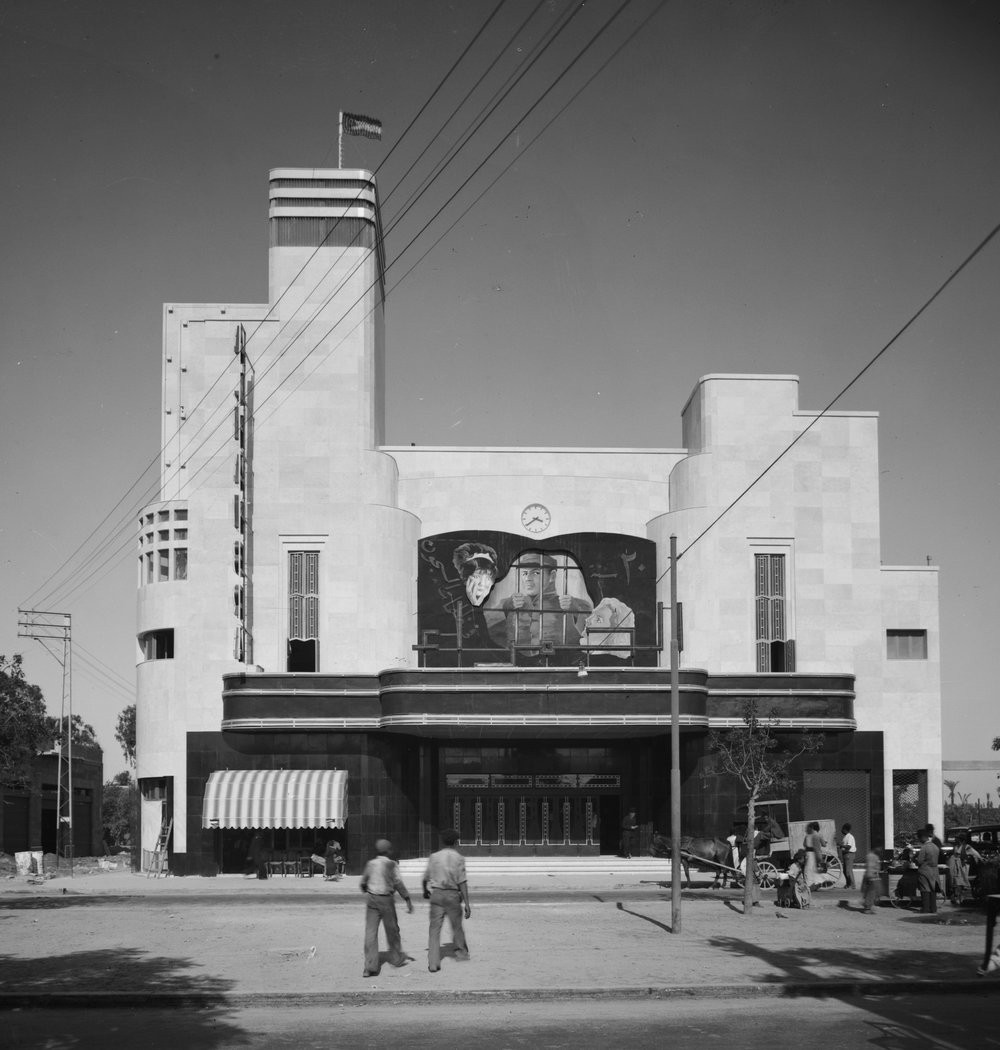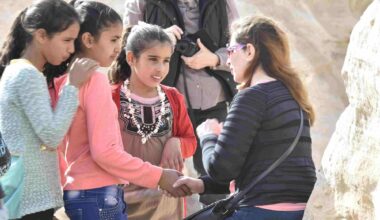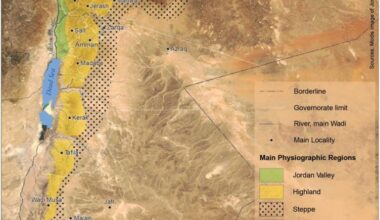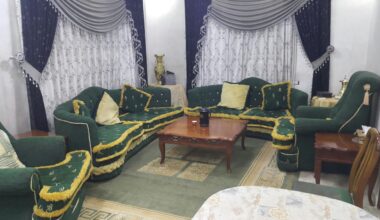by Maïra al-Manzali.
What images does the Middle East produce? What images of the region do Western media outlets consume? What makes certain images more desirable, more marketable than others? How can images act as loci of resistance?
These were among the many questions raised by Reema Salha Fadda, DPhil candidate from the University of Oxford, at her workshop seminar held at Darat al-Funun from 19/06/16 to 29/06/16. Participants were presented with images ranging from western journalist photography to abstract video art; from constructed propaganda photos to subversive graffiti. There were no boundaries between ‘high’ and ‘low’ culture, as, in the terms of Jacques Ranciere, all forms of aesthetics are political. The visual world of the Middle East in all its aspects was shown as intersectional, ambivalent, and always politically charged. Reading images – that is, understanding their superficial and underlying cultural and political meanings – is a form of literacy in itself.
The first session introduced key concepts of visual culture analysis, drawing upon both cultural and political theorists, such as Lina Khatib, Lisa Wedeen, and Mark Levine. By surveying the images of the Middle East, be it on Google-Images, major news outlets, international art fairs or on the streets of Cairo, one can piece together an image culture that is in constant flux. No image is in isolation, for every image evokes another one. For example, the widely circulated photograph of the ‘girl with the blue bra’, exposing sexualised police violence against the female protesters was transformed into an image of resistance by graffiti artists such as Bahia Shehab. Transforming an image, by dislocating it from its original context, re-appropriating or recreating it disrupts the stereotypical images of violence and warfare the media has of the Middle East.
The concept of the ‘economy of images’ was also discussed. Certain images are allowed to enter the international art market, whereas others are censored: it is not always a question of quality. Amal Kenawy’s performance work Silence of the Sheep, in which she led men crawling on their feet through the streets of Cairo, has been circulated in international art markets, whereas Palestinian artist Larissa Sansour’s science-fiction film Nation Estate was deemed too political and rejected from an award it had fairly won.
One work depicts a criticism of a regime in line with what international audiences desire to portray; the other, a sarcastic depiction of dystopic neoliberalism – not the Middle East that art fairs would like to see.
In the second session, the focus shifted to the use of cinema as an alternative archive for Palestinian history through the films of Kamel Aljafari. The diversity of uses of the same sites and images was again emphasized. Whereas The Delta Force uses Jaffa as the site for a Chuck Norris action flick, Kamal Aljafari appropriates these images in Port of Memory to reclaim the Palestinian history and space of Jaffa. He digitally inserts the image of his uncle walking within the empty Jaffa of the American film, thereby reviving a city that no longer exists, documenting the undocumented: Jaffa with its original inhabitants. In his earlier film The Roof (which was also screened), we witness the invisible violence caused by the deliberate erasure of the memory of Palestinian Jaffa, against which Aljafari’s films act. As a man walks through a panorama museum of Tel Aviv, we hear an audio-guide tell the history of Jaffa as conquered and inhabited by Canaanites then Hashmoneans, passing through Greeks, Romans, Crusaders, Turks, and finally Israelis, without any mention whatsoever of Palestinian inhabitants – the museum thus acting as a locus of amnesia, rather than of memory.
We continued analysing the politics of film during the third session, comparing the Egyptian revolutionary films of the Moisreen Collective to Palestinian militant cinema from the 70s. Mohaned Yaqubi’s uses archival footage to revive the history of resistance, toying with the aesthetic of the old, worn down images, yet posing the question: was there more revolution in cinema than revolution itself? The question of what films are deemed objets d’art by bastions of culture in the West was also raised. Arab and Tarzan’s Condom Lead (2013) sets a couple with an infant in a slick, modern, upper middle class apartment, unable to have sex due to interruption by the sound of bombing outside: therefore, the husband blows condom bubbles. Though taking the war in Gaza as its reference point (the title refers to Operation Cast Lead), the intention was to universalise the experience of warfare in terms of disruption of intimate life. This is, however, problematic, when universalisation means westernisation (if not whitening—the child of the Arab couple in the film is Dutch), and when western aesthetics used by Middle Eastern artists are showcased as emblematic of the region. The film was awarded at Cannes.
Equally problematic was Arab and Tarzan’s earlier film, Gaza 36mm, which, through archival footage, personal histories, and western film posters, documents the rise and fall of cinemas in Gaza due to internal politics and fundamentalist Islam. No mention whatsoever was made of Israel and its involvement in the erosion of Gazan culture. If one were to construct a narrative of the destruction of cinemas in Palestine, however, wouldn’t the place to start be the Jaffa Alhambra Cinema bombed by Irgun in 1947? The issue of western donors, festivals, and the narratives they enjoy being told is an invisible, yet inextricable force in the making of Palestinian cinema.

The last lecture wrapped up our discussions about film, and moved on to a debate about the influence of neoliberalism in art and Palestinian society in general. Birzeit professor Yazi Anani has called the new real estate projects in Palestine as a new form of ‘colonialism’, and whereas Gaza is the world’s largest open air prison, Ramallah is the 5-star prison. We discussed the interests involved in neoliberal development projects, selling comfortable lifestyles at high interest loans, development at the expense of places that are barred from development, such as Hebron, Nablus, and Gaza. Rather than fix the systemic problems of control over water and road access to old cities of historic Palestine (the memory of which is emphasized in Aljafari’s films), developers prefer to build anew by appropriating land from farmers: Rawabi City being the most emblematic case in this. The city is eerily built in the same architecture and planning as an Israeli settlement, and aspires to be a bubble of internationalism and development – despite not having control over its water supply.
Reality is ignored in most neoliberal projects; a 12-minute development ad for ‘New Egypt’ showed a country without poverty, pollution, security threats, or religion and local culture for that matter. These tactics are not new; as an Israeli foreign mister said in 2005: ‘we see culture as a propaganda tool of the first rank, and I do not differentiate between propaganda and culture.’ Just as Israel promotes its image of gay-friendliness (thus tolerance, in the mind of the western liberal), projects such as Rawabi seek to promote a new image of Palestine, divorced from occupation, historicity, or political aspirations: it is simply a hub for developers.
Propaganda is inextricable from visual culture, and is just as important in the image we have of a city, of a country, and of a history, as are true archives. Though we can rationally differentiate between reality and artifice, once our sensibilities are struck by an image, the human mind is open to persuasion. A critical eye is necessary to not be fooled, and to be receptive to images which challenge our received ideas. The workshop presented demanding, multivocal, and sometimes contradictory images to its participants, and triggered thoughtful discussion. Visual culture analysis is of use to any social scientist in the region, as well as to the individual who wants to critically understand the art, film, and propaganda which surround them.
Maïra al-Manzali is the Resident Intern at the British Institute in Amman, May to October 2016. Her blog with essays, translations, and artwork can be found at www.almanzali.wordpress.com.
Reema Salha Fadda was a CBRL Fellow at both the Kenyon Institute in Jerusalem and the British Institute in Amman in 2014-2016. She also held a Darat al-Funun scholarship in Amman in 2016. She writes extensively on the contemporary art world, including for the art magazine ‘Ibraaz’.
The views expressed by our authors on the CBRL blog are not necessarily endorsed by CBRL, but are commended as contributing to public debate.














